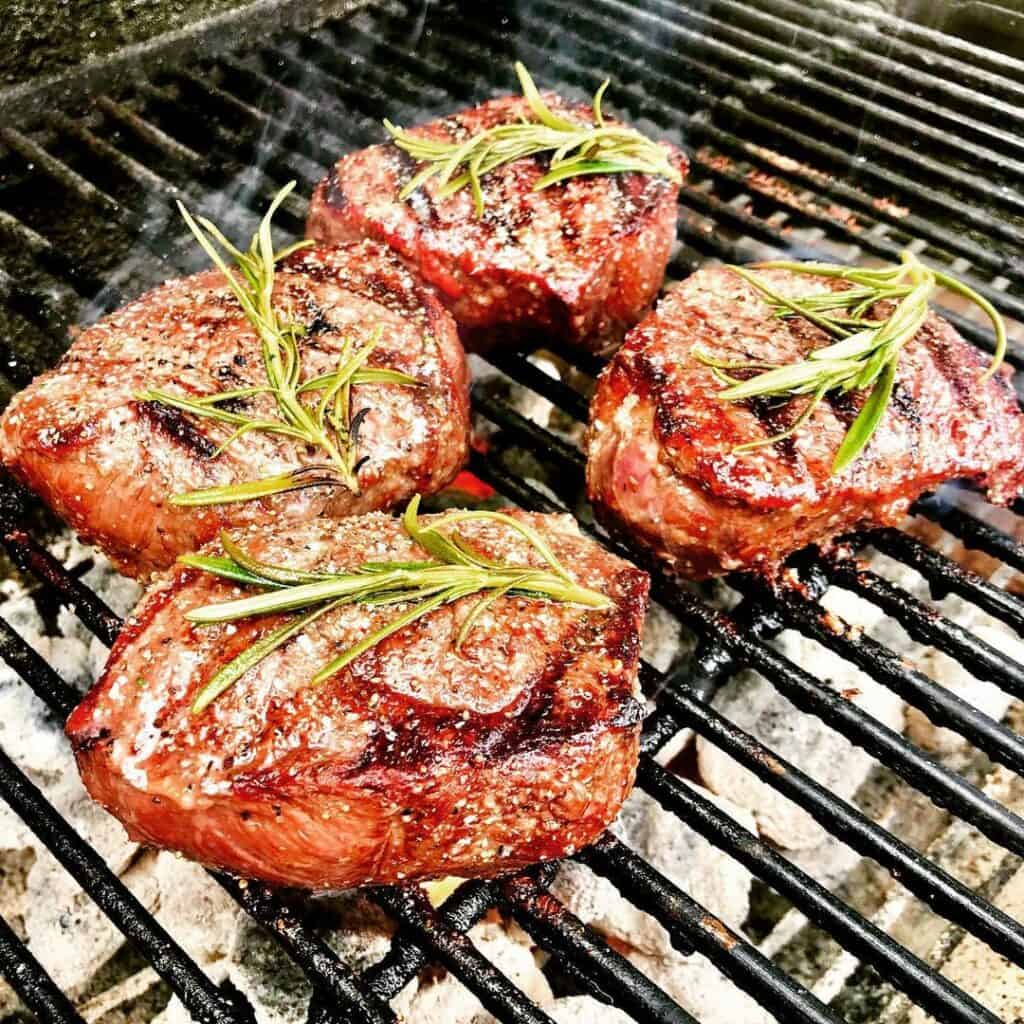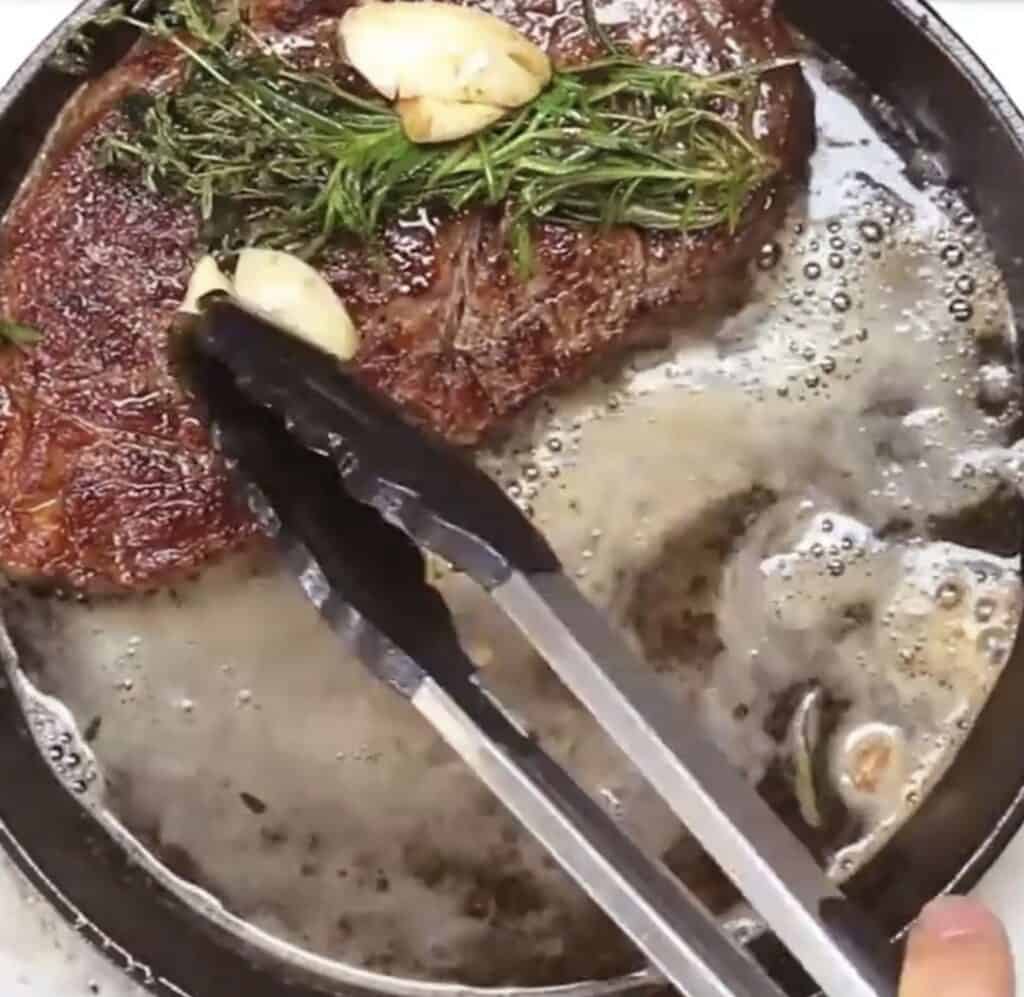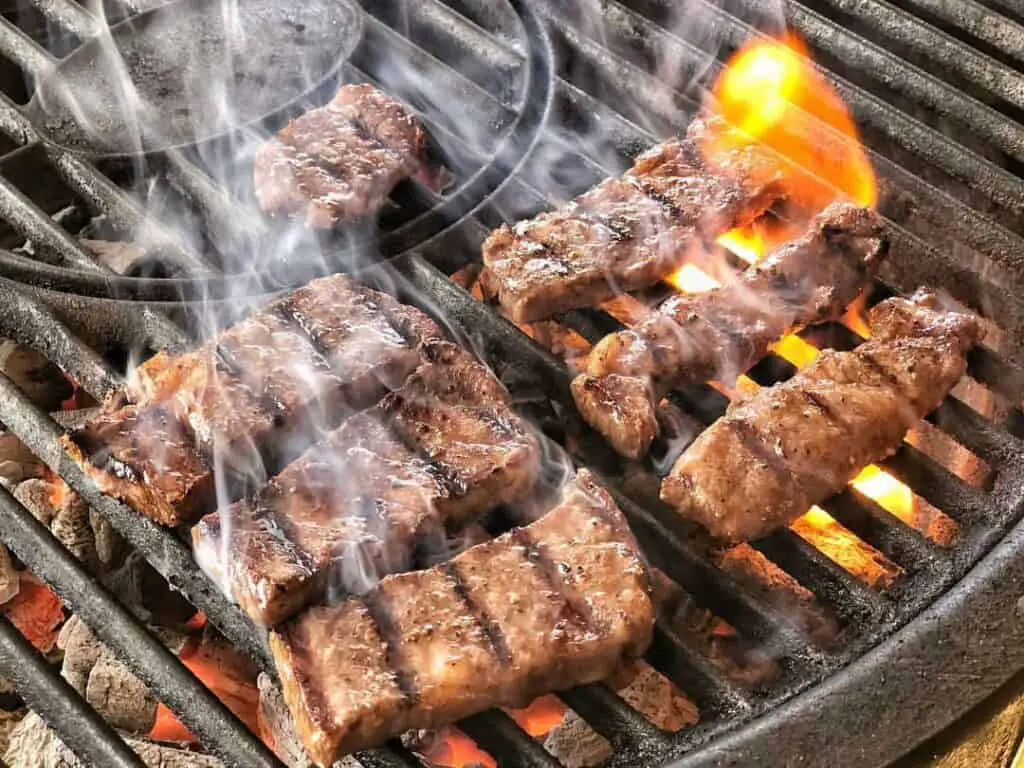If you’re a beef lover, then it’s almost certain that you’ve heard of wagyu beef, which is like the holy grail of beef products.
However, if you’re fortunate enough to get your hands on some of this quality beef, then you may be wondering how you can cook it to make the most of the opportunity.
So how to cook Wagyu? The best way to cook wagyu is on a cast iron skillet to make the most of the meat’s juiciness and flavor. Wagyu can also be grilled or roasted after being pan seared, depending on your tastes and how you typically cook your beef.


Cooking wagyu is by no means easy, and we can’t exactly sum up how you can enjoy your beef to the fullest over the course of a couple of sentences. If you want to know all of the hidden tricks to getting the tenderest, most flavorful wagyu, then read on a little further to find out more.
How to Cook Wagyu
Making sure that you cook your wagyu properly is largely a matter of preparation, and that’s something that is often sorely overlooked by people purchasing these cuts. In most cases, you can expect your wagyu beef to arrive frozen in a vacuum sealed bag, and unless you’re getting ready to cook it immediately, you’ll want to store it properly.
As soon as your wagyu arrives, transfer it to the freezer before its temperature can drop. Allowing your wagyu beef to be exposed to air before you put it in the freezer can potentially result in it ending up freezer burned, and minimizing the amount of time it spends out of the freezer will minimize those chances.
When you’re ready to start cooking your wagyu, you’ll also need to know how to thaw it so that you won’t affect the quality of the meat. Move your steak into the refrigerator and thaw it out. In your average fridge, it should take about six hours to thaw your steak for every pound of meat that you have.
It’s usually a good idea to time this in advance because you won’t want to leave your steak in the fridge for much longer once it’s thawed. Taking out the steak as soon as it’s ready will allow you to maximize the flavor so you don’t end up diminishing the unique taste of your wagyu beef.

As with other steaks, you’ll want to let your wagyu beef reach room temperature before you start cooking it. This should take about 30 minutes. Failing to get your beef to room temperature will result in a temperature difference between the interior of the steak and the exterior of it, resulting in it being cooked unevenly.
Of course, another huge part of cooking steak is the seasoning, but wagyu beef has such intense flavors that you don’t want to overseason the meat. It is recommended that you only season your wagyu steaks with a little bit of pepper and salt, but that’s merely a recommendation and by no means law.
If you’d like to use some steak seasoning, just ensure that you don’t use too much of it and end up drowning out the unique flavors of your wagyu steaks. Once your steak is seasoned, you should be ready to start cooking it.
Cast Iron

Cooking wagyu beef in a cast iron skillet is probably the most common method of preparation because it gives you a good degree of control over how the meat comes out in the end. The recommended serving temperature for wagyu beef is medium rare, but what matters is that you enjoy it, as long as you don’t cook it well-done.
Start off by heating up your cast iron on high heat. Once your pan has reached a suitable temperature, you can then apply your choice of grease to it. Butter and olive oil are both legitimate choices, but wagyu beef allows you the unique option of using some fat trimmings to grease the pan as well.
Once your pan is greased up, you’ll have to decide how you want to cook your wagyu. If you’re aiming for medium rare, you’ll want to sear it for about four minutes on each side. If you prefer your steak a little redder, then about three minutes per side should suffice to get the steak to a rare temperature.
Be sure to check your steak using either a meat thermometer or touch it to feel how much give the steak has. If you feel like your steak is ready to go, then you can take it out of the pan and leave it to rest on a cutting board. You’ll want to wait between five and ten minutes to allow the juices to settle and the steak to finish cooking.
Grilling Wagyu

The potential for flare ups means that many people scoff at the idea of grilling wagyu steak, but there are a few ways to minimize this. If you want to grill the steak traditionally, you can do so using a hibachi over Japanese charcoal, which is known as binchotan.
To make it easier to dodge any flare ups that occur, even with this advanced setup, you’ll want to make sure that you cut your steak into smaller parts before you put it on the grill. This will allow you to quickly maneuver the steak around the grate without having to worry about some parts getting cooked unevenly due to the flames.
Grilling wagyu will still lock in the juices and provide the sear that you’re looking for as long as you make sure to pay the utmost attention to it over the course of its cooking time. It will also give it a unique char that adds to the flavor without overpowering it, provided you use binchotan as your fuel.
Keep in mind that grilling is only recommended for authentic Japanese wagyu because of its intense marbling, which will ensure that it doesn’t end up drying out while it’s on the grill.